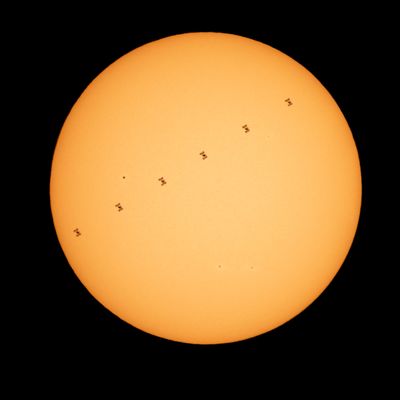International Space Station to test faster laser communication system

Spacecraft typically use radio-based communication systems to talk to Earth. But in the future, lasers may become part of astronauts’ communications arsenal.
Late last month, NASA announced that its next resupply mission to the International Space Station will include a terminal that, once installed, will help demonstrate the benefit of laser communication, allow more data to be transmitted to and from space, and accelerate discoveries about the universe.
Called the Integrated LCRD Low-Earth Orbit User Modem and Amplifier Terminal (ILLUMA-T), the device is the next phase of an ongoing experiment with laser communication begun last year.
The technology brings significant benefits for astronauts and scientists. The invisible lasers used in the experiment are on the infrared spectrum and can pack up to 100 times more data into a single transmission than radio-based systems. This could speed up research on Earth, and the new relay would make it easier for missions to get laser communications to the planet’s surface.
NASA officials say the refrigerator-sized relay will allow astronauts on the space station to send high-resolution data, including images and video. The communications will first go from the space station to the relay, then be passed on to ground stations in Hawaii and California.
“We are integrating this technology on demonstrations near Earth, at the Moon, and in deep space,” Badri Younes, former deputy associate administrator for NASA’s Space Communications and Navigation program, said in a news release.
The current device has a leg up on past laser experiments. When NASA proved it could transmit and receive laser communications from lunar orbit in 2013, for example, it transmitted at a rate of just 622 megabits per second. In contrast, the current device transmits data at 1.2 gigabits per second.
If the current experiment proves successful, the space agency says it may become a permanent part of NASA’s communications platform and could one day be used farther away on missions to the moon, Mars and other parts of space.